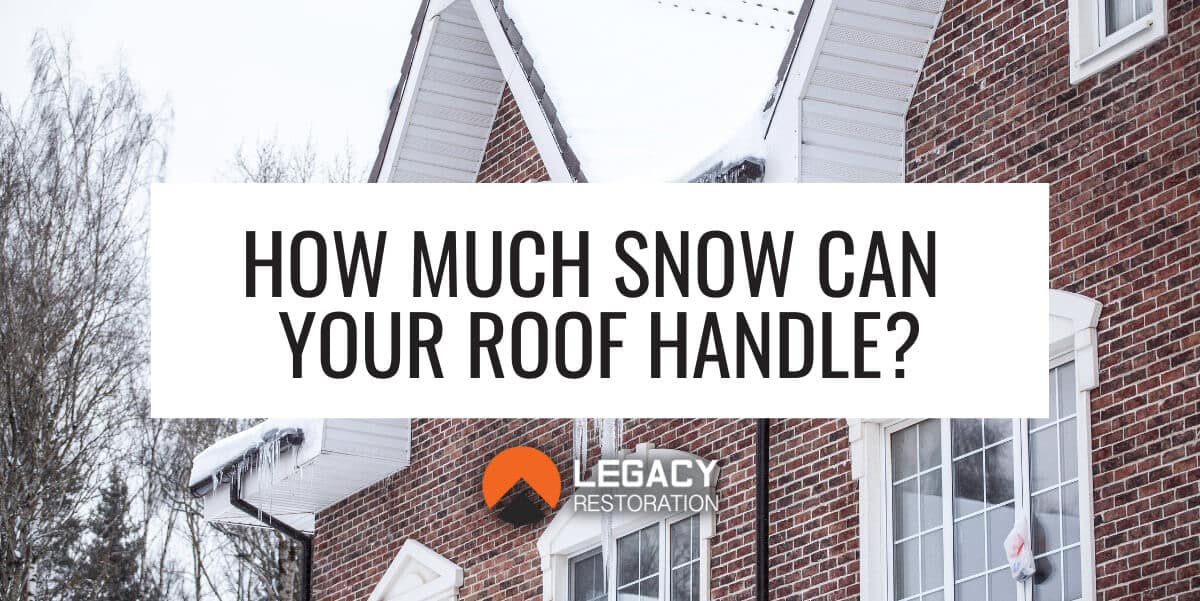Winter is full of things to look forward to, including lots of family time and the holidays at the top of the list. However, as a homeowner, you must consider necessary maintenance and preventive measures to ready your home for cold temperatures and harsh weather.
While raking the leaves and shutting down your sprinklers, you may wonder, “how much snow can my roof handle?” And how can you keep snow off of your roof?
The maximum snow load on your roof depends on several factors, but the most important thing to remember is that the average roof can support about 20 pounds per square inch. However, some areas of the U.S. prone to heavy snowfall may require roofing to support a heavier load. If your roof sustains loads heavier than it can bear, it can cause significant home damage.
How Much Snow on a Roof is Too Much?
Many guidelines help you determine how much snow on a roof is too much. Here are some tips to keep in mind this winter:
- 10-12 inches of fresh snow melts down to about 1 inch of water.
- Most roofs can support about 40-45 inches of fresh snow.
- Packed snow is much more dense than fresh snow or fluffy snow. Therefore, a roof can support about 20 inches of packed snow.
- One inch of ice weighs as much as one foot of packed snow.
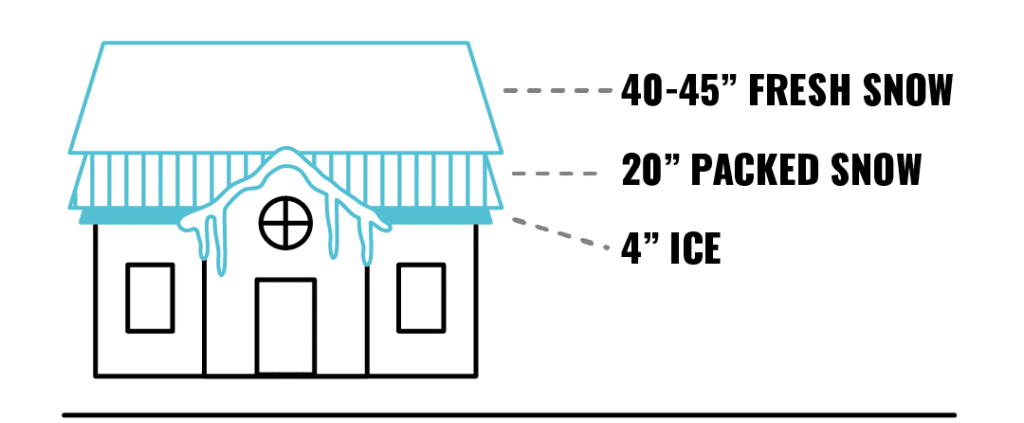
What Roof Structure is Best for Snow?
A steeper incline will allow the snow to fall more easily off of your roof. Therefore, experts recommend having a roof pitch of no less than 1:12 if you live in an area that is prone to heavy snow. Talk to a roofing expert to determine the right roof design for your home.
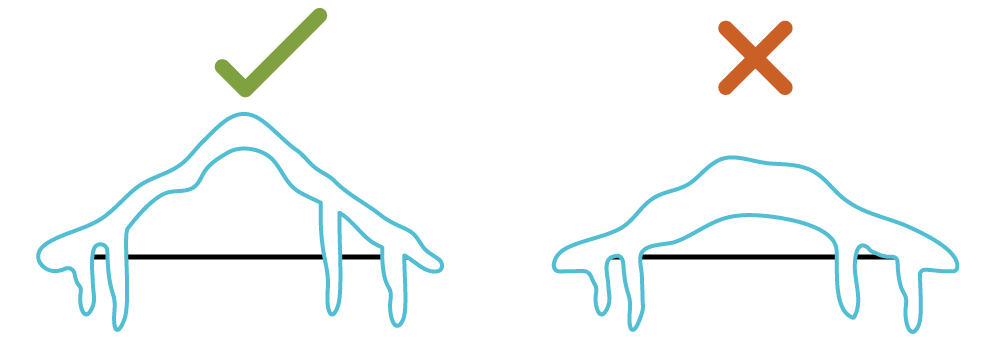
What is the Best Roof Material for Snow?
Choosing the best roofing material for snow is critical. It is important to choose a material like slate, metal, or asphalt. These materials can withstand heavy wind, snow, and ice without suffering critical damage and also can insulate your home. That way, you don’t have to rely so heavily on your heater, which can cause your utility bill to rise significantly.
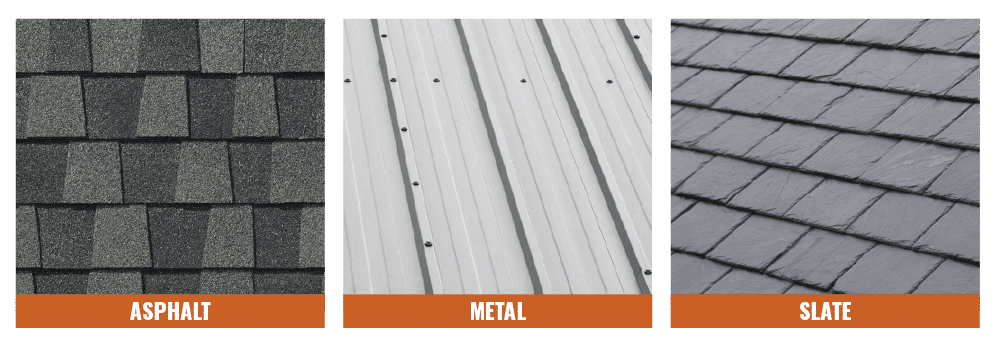
How Do You Know if Your Roof Has Too Much Snow on It?
Depending on when your house was constructed, different types of construction materials, and the age of your roof, the answer to that question can vary.
Thankfully, there are some warning signs you can look for to determine if there is too much snow on it and when you should call in the professionals.
Noises Coming From Your Roof
The first question to ask yourself as the snow piles on your roof is whether you hear noises. If you hear creaking, cracking, or popping noises there’s a good chance that the weight of the snow is compromising the structural integrity of your roof, and it should be removed immediately to stop further damage.
Ice Dams Forming and Prevention
Ice dams form when ice builds up over time, causing a blockage that prevents snow from falling off of the roof. Fortunately, there are ways to prevent ice dams from forming in the first place. Here are some tips for prevention and removal:
- Gently rake your roof regularly
- Install heat cables
- Use a chip and hammer
- Pour warm water over the dam
- Get better attic insulation and ventilation
- Use an ice dam sock
If you step outside and notice visible sagging in your roof, this is an emergency. Your roof is collapsing under the weight of the snow. You should immediately call our professionals to assess the structural damage and identify the best solution for you.
Leaking or Water Spots on Your Ceiling
If you notice visible leaking or rings of water spots on your ceiling, your roof has been compromised. It’s likely that snow has melted and caused moisture to penetrate the inside of your home. Water penetration from holes in your residential roof can cause mold, mildew, and water damage. If left to leak, it can eventually compromise the supporting wooden structures of your roof, resulting in costly repairs.
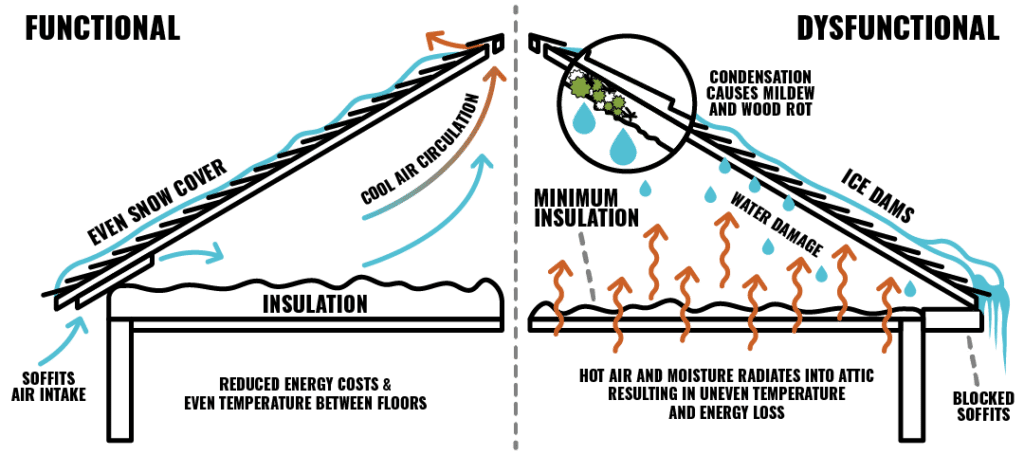
Conclusion
You’ve learned how to remove snow from your roof and prevent snow from collecting on your roof in the first place, but it’s still important to note that all roofs wear out eventually. If you notice structural damage or water spots and rings on your ceiling, contact us for a free inspection of your roof and a repair estimate.

